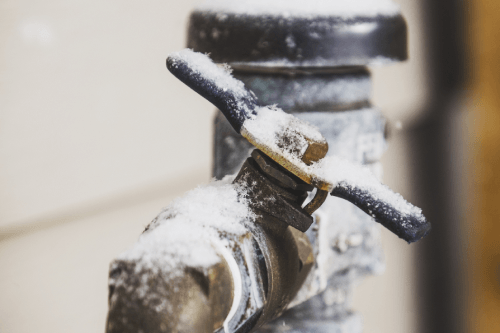Crucial Tips for Avoiding Frozen Pipes in Winter Seasons
Crucial Tips for Avoiding Frozen Pipes in Winter Seasons
Blog Article
Were you hunting for ideas concerning Preventing and dealing with frozen pipes?

Cold weather can ruin your plumbing, especially by freezing pipelines. Here's how to prevent it from taking place and what to do if it does.
Introduction
As temperatures decline, the threat of frozen pipes rises, potentially bring about expensive repairs and water damage. Understanding just how to prevent frozen pipelines is critical for homeowners in cool environments.
Recognizing Icy Pipelines
What triggers pipes to freeze?
Pipes freeze when exposed to temperature levels listed below 32 ° F (0 ° C) for prolonged periods. As water inside the pipelines ices up, it expands, putting pressure on the pipeline walls and possibly triggering them to burst.
Risks and problems
Icy pipelines can result in supply of water interruptions, property damages, and pricey fixings. Ruptured pipes can flooding homes and trigger comprehensive architectural damage.
Indicators of Frozen Water Lines
Identifying icy pipes early can avoid them from bursting.
Exactly how to recognize frozen pipes
Look for reduced water circulation from taps, unusual odors or noises from pipes, and visible frost on exposed pipes.
Avoidance Tips
Shielding vulnerable pipelines
Cover pipelines in insulation sleeves or make use of warmth tape to shield them from freezing temperature levels. Focus on pipelines in unheated or outside areas of the home.
Heating strategies
Maintain interior rooms properly warmed, specifically areas with pipes. Open up cabinet doors to allow cozy air to distribute around pipes under sinks.
Securing Outside Pipes
Garden tubes and outside taps
Disconnect and drain pipes garden pipes before winter months. Set up frost-proof faucets or cover outside taps with insulated caps.
What to Do If Your Pipelines Freeze
Immediate activities to take
If you think icy pipelines, maintain faucets available to soothe pressure as the ice melts. Utilize a hairdryer or towels soaked in warm water to thaw pipes gradually.
Long-Term Solutions
Architectural changes
Take into consideration rerouting pipelines away from outside wall surfaces or unheated areas. Add additional insulation to attic rooms, cellars, and crawl spaces.
Upgrading insulation
Invest in top notch insulation for pipelines, attic rooms, and wall surfaces. Correct insulation helps maintain consistent temperatures and decreases the risk of frozen pipelines.
Verdict
Protecting against icy pipes calls for positive steps and fast actions. By comprehending the reasons, signs, and safety nets, property owners can protect their pipes during winter.
5 Ways to Prevent Frozen Pipes
Drain Outdoor Faucets and Disconnect Hoses
First, close the shut-off valve that controls the flow of water in the pipe to your outdoor faucet. Then, head outside to disconnect and drain your hose and open the outdoor faucet to allow the water to completely drain out of the line. Turn off the faucet when done. Finally, head back to the shut-off valve and drain the remaining water inside the pipe into a bucket or container. Additionally, if you have a home irrigation system, you should consider hiring an expert to clear the system of water each year.
Insulate Pipes
One of the best and most cost-effective methods for preventing frozen water pipes is to wrap your pipes with insulation. This is especially important for areas in your home that aren’t exposed to heat, such as an attic. We suggest using foam sleeves, which can typically be found at your local hardware store.
Keep Heat Running at 65
Your pipes are located inside your walls, and the temperature there is much colder than the rest of the house. To prevent your pipes from freezing, The Insurance Information Institute suggests that you keep your home heated to at least 65 degrees, even when traveling. You may want to invest in smart devices that can keep an eye on the temperature in your home while you’re away.
Leave Water Dripping
Moving water — even a small trickle — can prevent ice from forming inside your pipes. When freezing temps are imminent, start a drip of water from all faucets that serve exposed pipes. Leaving a few faucets running will also help relieve pressure inside the pipes and help prevent a rupture if the water inside freezes.
Open Cupboard Doors
Warm your kitchen and bathroom pipes by opening cupboards and vanities. You should also leave your interior doors ajar to help warm air circulate evenly throughout your home.

Do you like reading up on How to Prevent Your Pipes From Freezing? Try to leave a remark down the page. We will be happy to see your views about this blog. Hoping that you come back again soon. Are you aware of another individual who is looking into the niche? Be sure share it. I truly appreciate your readership.
Click Here Report this page